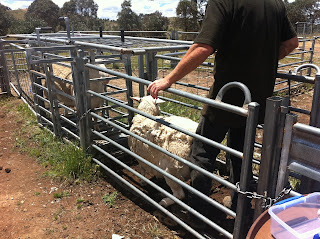Last night a huge storm hit Claremont and the whole Southern Tablelands region. Three seperate storm cells passed over the property throughout the night, bringing with them lightening, hail, strong winds and lots of rain.
The power went out at about 5:30pm and didn’t come back until lunchtime the next day! When the power goes out at our place it means no water and no flushing toilets.
Luckily we have gas cooking so I was able to prepare dinner by candle light, very romantic. We also have a wind-up radio so that was the entertainment for the evening.
At 06:00 am the power was still not working so Kim hooked up the generator to the water pump so we could have a shower and flush the toilets. Although the power outage was a bit of a nusance we are very used to blackouts. This year there have been 3 outages where the power was out for more than 4 hours. Last year we had about 10 including one on Christmas day.
These are some pictures taken by local residents of the storm.
The power went out at about 5:30pm and didn’t come back until lunchtime the next day! When the power goes out at our place it means no water and no flushing toilets.
Luckily we have gas cooking so I was able to prepare dinner by candle light, very romantic. We also have a wind-up radio so that was the entertainment for the evening.
At 06:00 am the power was still not working so Kim hooked up the generator to the water pump so we could have a shower and flush the toilets. Although the power outage was a bit of a nusance we are very used to blackouts. This year there have been 3 outages where the power was out for more than 4 hours. Last year we had about 10 including one on Christmas day.
These are some pictures taken by local residents of the storm.

























































